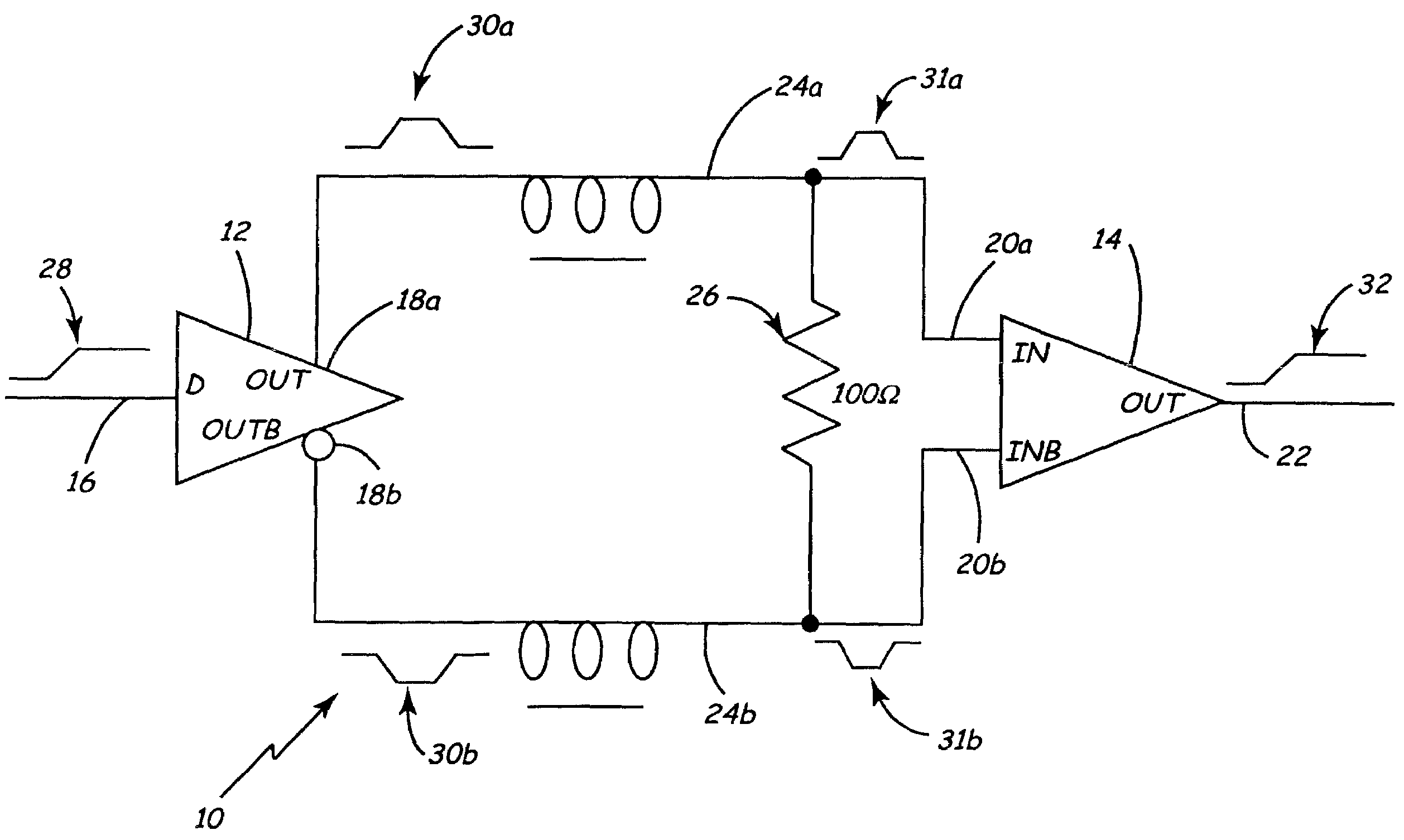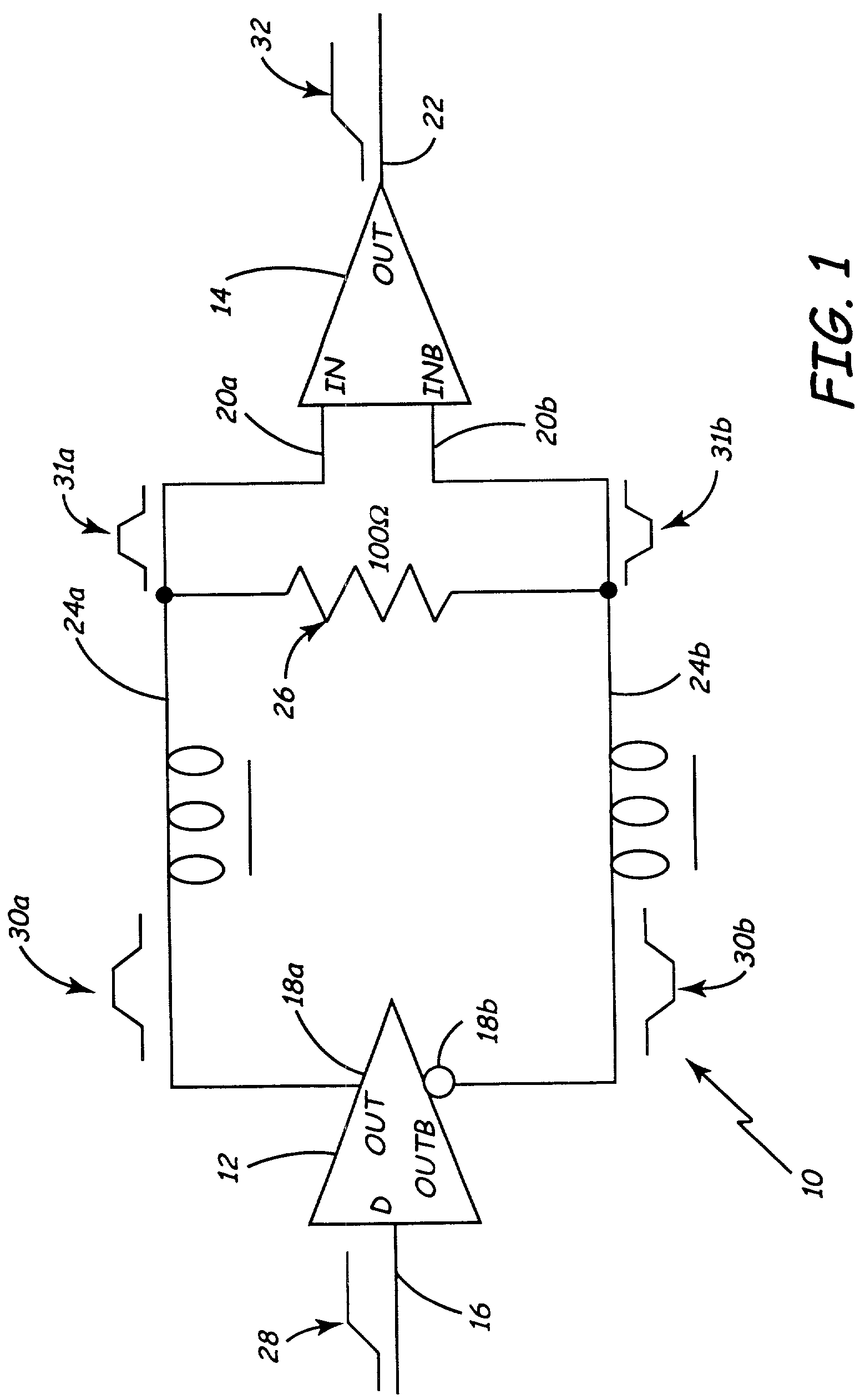Low power pulse signaling
a low-power pulse and signaling technology, applied in pulse manipulation, pulse technique, power consumption reduction, etc., can solve problems such as drawing considerable dc power
- Summary
- Abstract
- Description
- Claims
- Application Information
AI Technical Summary
Benefits of technology
Problems solved by technology
Method used
Image
Examples
first embodiment
[0018]FIG. 1 is a schematic of low-power pulse signaling (LPPS) system 10 for communicating between on-chip or off-chip integrated circuits, according to the present invention. System 10 includes driver 12 and receiver 14. Driver 12 includes driver input 16, driver output 18a, and inverted driver output 18b. Receiver 14 includes receiver input 20a, inverted receiver input 20b, and receiver output 22. Driver output 18a is connected to receiver input 20a via transmission line 24a. Inverted driver output 18b is connected to inverted receiver input 20b via transmission line 24b. Transmission line 24a and transmission line 24b are terminated by resistor 26 at receiver 14.
[0019]In operation of low-power pulse signaling system 10, driver 12 receives signal 28 at driver input 16. Signal 28 is provided by other integrated circuitry (not shown), such as clocking circuitry or data circuitry. When signal 28 changes its logic state (that is, changes from a logic “0” to a logic “1” or from a logi...
second embodiment
[0027]FIG. 3 is a detailed schematic of low-power pulse signaling driver circuit 12 of FIG. 1 with terminated transmission line 24 and output pulse height detector circuit 60. Driver circuit 12 includes driver input 16, signal inverter 62, delay inverters 64, pulse logic 66, set-reset latch 67, transistor driver logic 68a, inverted transistor driver logic 68b, low-power common mode voltage circuit 70, capacitor 72, driver terminating resistors 73a and 73b, electrostatic discharge (ESD) resistors 74a and 74b, and ESD capacitors 76a and 76b.
[0028]In operation of driver circuit 12, driver input 16 receives signal 28. As described above, signal 28 is provided by other integrated circuitry (not shown), such as clocking circuitry or data circuitry. While signal 28 maintains a steady logic state, a low-power non-logic state is maintained at outputs 18a and 18b by transistor driver logic 68a and inverted transistor driver logic 68b, respectively. When signal 28 changes its logic state, a s...
PUM
 Login to View More
Login to View More Abstract
Description
Claims
Application Information
 Login to View More
Login to View More - R&D
- Intellectual Property
- Life Sciences
- Materials
- Tech Scout
- Unparalleled Data Quality
- Higher Quality Content
- 60% Fewer Hallucinations
Browse by: Latest US Patents, China's latest patents, Technical Efficacy Thesaurus, Application Domain, Technology Topic, Popular Technical Reports.
© 2025 PatSnap. All rights reserved.Legal|Privacy policy|Modern Slavery Act Transparency Statement|Sitemap|About US| Contact US: help@patsnap.com



